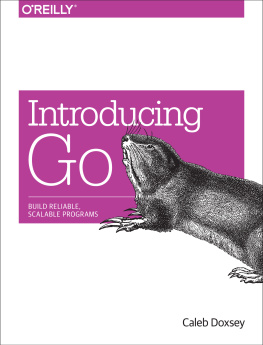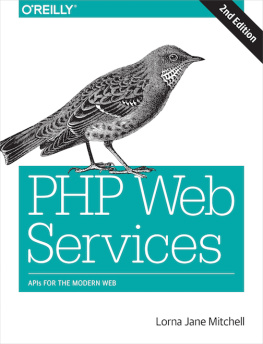Make: Like The Pioneers
by The Editors of Make:
Copyright 2015 Maker Media. All rights reserved.
Printed in the United States of America.
Published by Maker Media, Inc. , 1160 Battery Street East, Suite 125, San Francisco, CA 94111.
Maker Media books may be purchased for educational, business, or sales promotional use. Online editions are also available for most titles (http://safaribooksonline.com). For more information, contact our corporate/institutional sales department: 800-998-9938 or corporate@oreilly.com .
- Editor: Patrick Di Justo
- Production Editor: Nicholas Adams
- Proofreader: Amanda Kersey
- Indexer: Bill Morrison and Megh Jones
- Interior Designer: David Futato
- Cover Designer: Brian Jepson
- Illustrator: Rebecca Demarest
- October 2015: First Edition
Revision History for the First Edition
- 2015-09-24: First Release
See http://oreilly.com/catalog/errata.csp?isbn=9781680450545 for release details.
The Make logo is a registered trademark of Maker Media, Inc. Make: Like the Pioneers, the cover image, and related trade dress are trademarks of Maker Media, Inc.
Many of the designations used by manufacturers and sellers to distinguish their products are claimed as trademarks. Where those designations appear in this book, and Maker Media, Inc., was aware of a trademark claim, the designations have been printed in caps or initial caps.
While the publisher and the authors have used good faith efforts to ensure that the information and instructions contained in this work are accurate, the publisher and the authors disclaim all responsibility for errors or omissions, including without limitation responsibility for damages resulting from the use of or reliance on this work. Use of the information and instructions contained in this work is at your own risk. If any code samples or other technology this work contains or describes is subject to open source licenses or the intellectual property rights of others, it is your responsibility to ensure that your use thereof complies with such licenses and/or rights.
978-1-680-45054-5
[LSI]
Preface
The book you are holding in your hand is a departure from the usual Make: book.
In this book you wont find any robots, drones, Arduinos, Raspberry Pis, or smart entities in the Internet of Things.
What you will find are fire bows and homemade cider, pressed paper and hand-sewn books, crafted chairs to sit in while you read them, and a sculpted lamp to light the night.
Youre holding a book about living like a pioneerperhaps like the pioneers of the American West prior to 1890, perhaps like anyone trying to pioneer a new life for themselves with minimal assistance (or interference) from the greater civilization around us.
This book is a collection of old projects that have appeared in the pages of Make: over the past 10 years. But theyre also projects that could have been undertaken before the 20th century. Well take on these projects in a modern way, with contemporary tools and respect for safety.
The book begins, as a pioneers day might, with the lighting of the fire. While many pioneers crossing the American plains would have banked their fire overnight and revived it in the morning, occasionally they would need to start a fire from scratch. Wendy Tremayne, the author of the project, shows you exactly how you can do that without a match.
The next step in the morning routine is given to a curious hybrid of bacon and soap. Its a pretty common thing to wash ones self first thing in the morning, and its also a venerated American custom to eat bacon for breakfast. The author Tim King takes care of both traditions in one project by showing you how to make homemade soap using rendered pig fat (which you can pretend you slaughtered yourself on the Oregon Trail). Soap making was a respected profession in the colonial and pioneer eras, with the village soap maker often doubling as the local candle maker (called a chandler), because both items were created from the rendered fat of livestock, such as pigs and cows.
But you cant break your fast with bacon soap. So how about a nice glass of homemade apple cider? In this book, Dr. Nevin Stewart, a former chemist who has trained as a chefchemistry and cooking have a lot in common, especially if youre hungryshows you how to use modern techniques to make old-fashioned cider.
The back-to-back projects of paper making and bookbinding were lucrative professions for nearly 400 years, from the 16th through the 19th centuries. An early paper maker would have made into paper leftover scraps of cloth (usually the underwear of recently deceased people) as well as other fibrous plant scraps. In this book, Franois Vigneault shows you how to make paper just like they did, but without the used undies. He originally developed this Make: project as a way to create something beautiful and functional from junk mail!
The act of typesetting a publicationusing tiny pieces of lead alloy with punched letters on them to create blocks of texthas become much less common in the 21st century. But the art of bookbinding endures: sewing together various sheets of paper into signatures, and then securing several signatures of into a hardcover book. While the binding process for a book like this one is automated, Brian Sawyer (who calls himself a bibliophile at heart, a book editor by trade, and a book crafter by avocation) shows you how to do it by hand.
Part of a pioneers day might have been given over to longer-term projects like crafting furniture, such as the furniture how-tos in this book by authors Gordon Thorburn and Larry Cotton. Thorburn became intrigued with making historic replica furnishings thanks to his friendship with a local furniture craftsman, who was trying to age imitation Jacobean joint stools by soaking them in a soup of, shall we say, organic waste. You dont have to go that far, thoughsimply building the stool might be enough to prove your dedication to the craft. Cotton wanted to see what kind of chair he could craft from a single piece of plywood. Youd be surprised by how much wood that really is and by the Adirondack-style chair you can make from it.
The art of tying together simple structural members with string, cord, vines, or animal tendons dates back into prehistory. Its called lashing, and its still in use today. Author Gever Tullys project shows how you can use this ancient art to create sturdy, long-lasting structures out of local materials. Of course, pioneersnot to mention Neanderthalsdid not have nylon twine to lash together their structures. But as we said above, this is a book of old projects done in a modern way.
We moderns have the luxury of preparing and cooking most everyday dinners within an hour or so of when we want them. Pioneers would have had to start the evening meal early in the day, perhaps right after finishing the morning repast. Often they used preserves: vegetables and fruits treated against rot by a process that more or less left them intact and tasty for eating later on. One of these processes is pickling: immersing and storing fresh produce in a solution of spices mixed with salt water or vinegar called a brine, which kills bacteria and leaves behind a tart, crunchy vegetable that does not easily go bad. For this book, author Kelly McVicker shows you how to bring the art of pickling to your own fresh veggies.
The problem of rotting food is even more pronounced with meat. To ensure that they would have a Thanksgiving turkey during their journey westward, some American pioneers carried a brined turkey in a barrel. Brining preserved the meat, made it easier to cookand by some accounts made the resulting roast bird more delicious, too. So even though you are not riding a wagon thats being dragged by oxen across thousands of supermarket-less miles, youll want to take on author Katie Goodmans project for brining your own Thanksgiving turkey. (Goodman also supplied us with the chapter on roasting pumpkin seeds.)
















